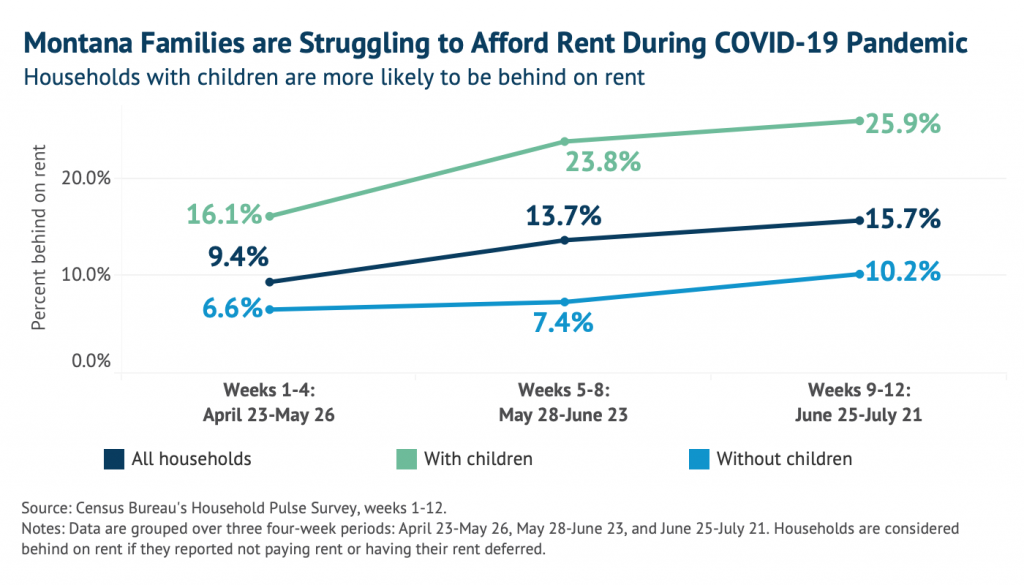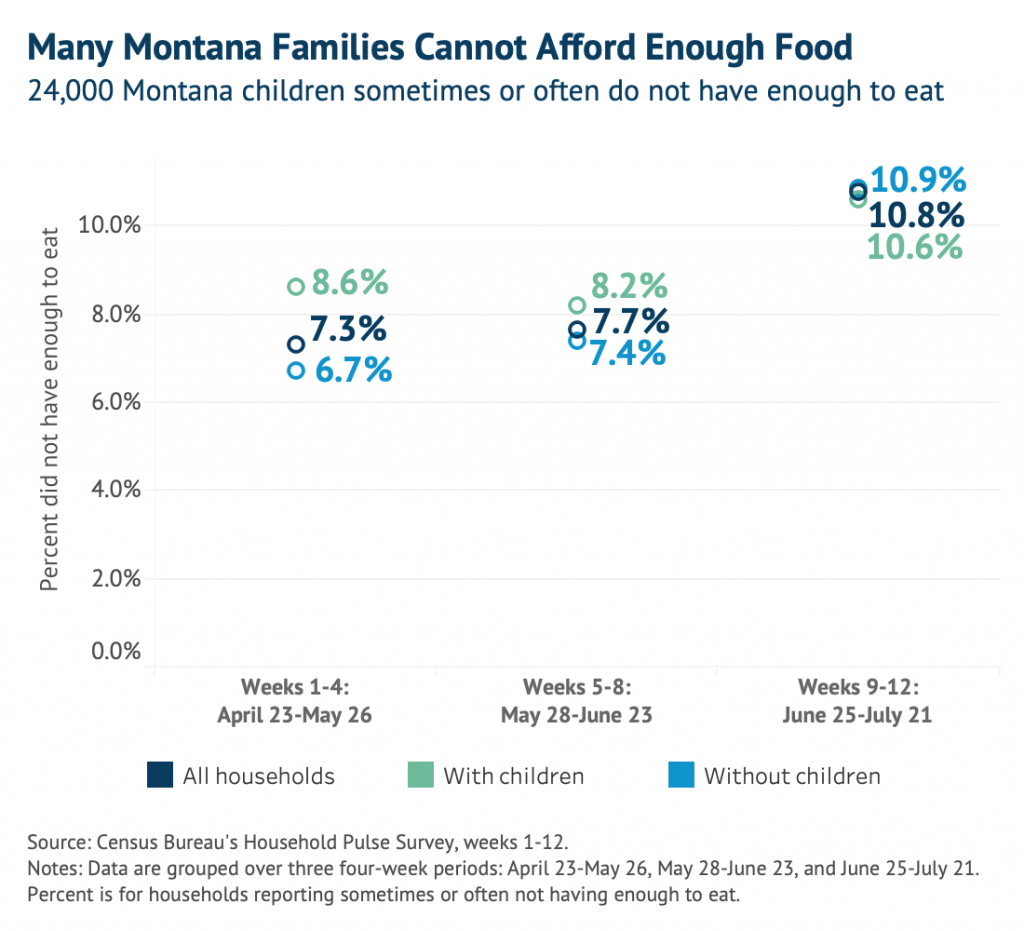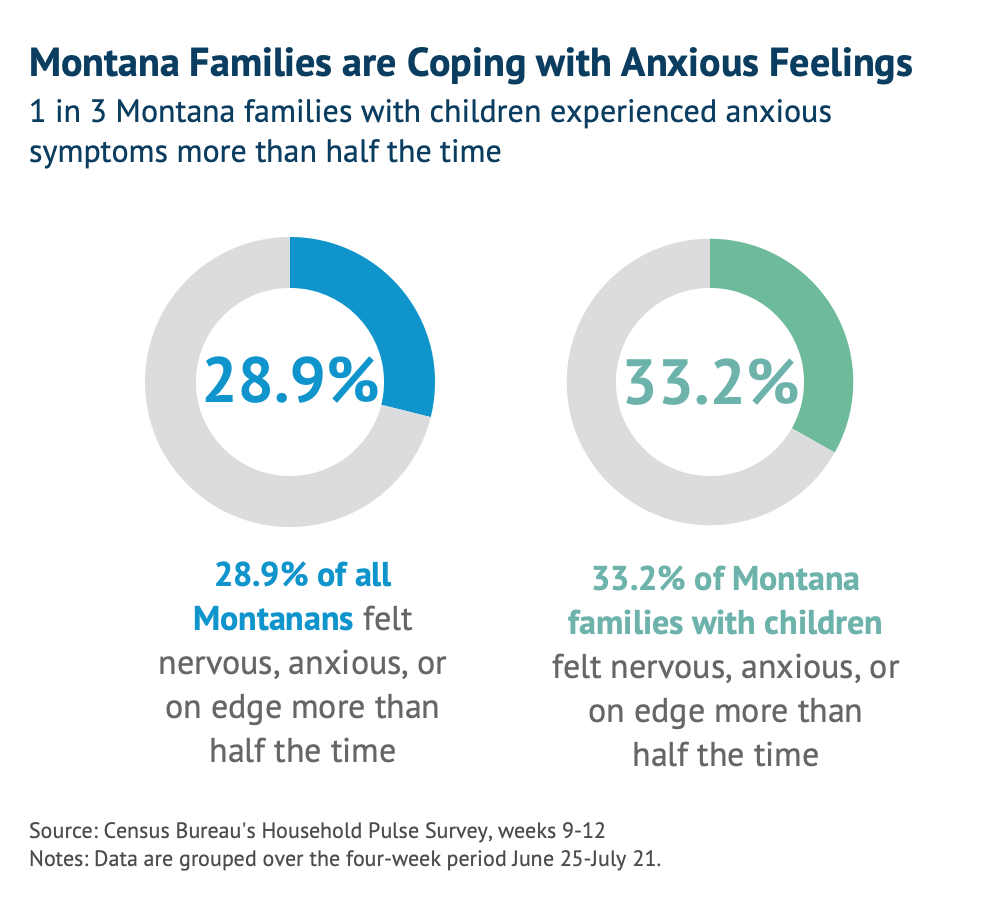 Many Montana families cannot afford enough food
About 11 percent of Montana families with children report that they often or sometimes did not have enough to eat between June 25th and July 21st. This translates to 24,000 Montana children. The majority (86 percent) of families that did not have enough to eat said that they couldn’t afford to buy more food. Montana has taken steps to help families who cannot afford enough food by increasing SNAP benefits for some households, extending SNAP eligibility, and offering replacement benefits for families receiving free and reduced-price lunches. However, this data shows that many Montana families still cannot afford enough to eat and need continued relief measures to put enough food on the table. A 15 percent increase in SNAP benefits for all households would help Montana families that cannot afford enough food.
Many Montana families cannot afford enough food
About 11 percent of Montana families with children report that they often or sometimes did not have enough to eat between June 25th and July 21st. This translates to 24,000 Montana children. The majority (86 percent) of families that did not have enough to eat said that they couldn’t afford to buy more food. Montana has taken steps to help families who cannot afford enough food by increasing SNAP benefits for some households, extending SNAP eligibility, and offering replacement benefits for families receiving free and reduced-price lunches. However, this data shows that many Montana families still cannot afford enough to eat and need continued relief measures to put enough food on the table. A 15 percent increase in SNAP benefits for all households would help Montana families that cannot afford enough food.
 Montana families are coping with anxious feelings
A third (33.2 percent) of Montana families with children said they experienced feeling nervous, anxious, or on edge more than half of the time. The number of families coping with these negative emotions has been high since the start of the pandemic, with 29.2 percent reporting anxious symptoms between April 23 and May 26.
Prior to the pandemic, 8.2 percent of all adults in the U.S. had anxiety symptoms, much lower than the estimate from June 25-July 21 that 32.8 percent of all adults in the U.S. are now experiencing anxiety symptoms more than half the time. A pre-pandemic comparison is not available for Montana or families with children. The high proportion of families experiencing anxious feelings means that children may be exposed to high-stress environments at home, which could have long-term impacts on their development. Increasing mental health services in schools may help children cope during this time of heightened stress.
Montana families are coping with anxious feelings
A third (33.2 percent) of Montana families with children said they experienced feeling nervous, anxious, or on edge more than half of the time. The number of families coping with these negative emotions has been high since the start of the pandemic, with 29.2 percent reporting anxious symptoms between April 23 and May 26.
Prior to the pandemic, 8.2 percent of all adults in the U.S. had anxiety symptoms, much lower than the estimate from June 25-July 21 that 32.8 percent of all adults in the U.S. are now experiencing anxiety symptoms more than half the time. A pre-pandemic comparison is not available for Montana or families with children. The high proportion of families experiencing anxious feelings means that children may be exposed to high-stress environments at home, which could have long-term impacts on their development. Increasing mental health services in schools may help children cope during this time of heightened stress. Not all Montana children have access to technology for education at home
Between June 25th and July 21st, 7.0 percent of Montana families with children under 18 rarely or never had access to a computer for educational purposes. During this same time frame, 6.5 percent of Montana families report they rarely or never had access to the internet for educational purposes. This translates to 11,000 Montana children who rarely or never have the technology tools for remote education. Compared to the U.S., Montana has a higher percentage of children without a computer or without internet for educational purposes. Interruptions in a child’s education due to lack of technology access could have long-term effects on their learning and development. More support may be needed for families with limited access to technology in order to succeed at remote learning.
Not all Montana children have access to technology for education at home
Between June 25th and July 21st, 7.0 percent of Montana families with children under 18 rarely or never had access to a computer for educational purposes. During this same time frame, 6.5 percent of Montana families report they rarely or never had access to the internet for educational purposes. This translates to 11,000 Montana children who rarely or never have the technology tools for remote education. Compared to the U.S., Montana has a higher percentage of children without a computer or without internet for educational purposes. Interruptions in a child’s education due to lack of technology access could have long-term effects on their learning and development. More support may be needed for families with limited access to technology in order to succeed at remote learning.


MBPC is a nonprofit organization focused on providing credible and timely research and analysis on budget, tax, and economic issues that impact low- and moderate-income Montana families.